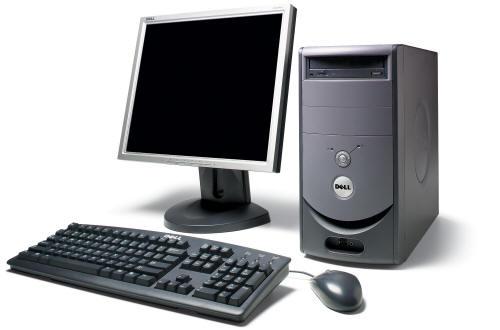
Some people seem to naturally “get” it – how their computer works, where the potential problems are and how to diagnose incomprehensible error messages and bizarre symptoms. Then there are the rest of us, where the “blue screen of death” sends waves of panic through our spines and there doesn’t seem to be any logical sense as to why the confounded machine is asking for your password 17 times or that it refuses to connect to your wireless internet.
While usability has come a long way from the blinking cursor and old fashioned MS-DOS prompts, there’s still much to be desired when it comes to understanding just how a computer works. A little bit of insight into the computer’s brain can be enlightening for even the biggest technophobes.
How computers see the world
Computers are programmed to behave the way we humans have taught them to. Of course, unlike a child or even a pet, computers process information as a series of logical inputs that essentially lead to a single outcome. For computers, even the simplest task requires intense processing and the recognition of numerous variables.
This great video gives us an idea of just how different types of software such as facial recognition are able to process the information that they see. With so many complicated scenarios, it’s no wonder that they sometimes can go into a fritz or malfunction for what seems to be no logical reason.
How to troubleshoot your computer issues
Computers have come a long way and it’s hard to imagine our daily lives without them. Of course, their complexity and our intense daily demands can sometimes lead to a few troubles or operating issues. IT support is now one of the most skilled and in demand professions in the world, and they’re expected to do everything from clearing out mysterious non-existent paper jams to securing and backing up terabytes of sensitive information and priceless data.
As you’re probably well aware, it can be challenging to get attention for your computer problems – not to mention that it can be a little embarrassing when the team comes over only for them to discover that your computer was just unplugged. Before you call for help, here are some things you can check and troubleshoot yourself:
- Check your cords – cords can come loose, so check that everything is plugged in properly and power points are switched on at the wall. If you have wireless devices such as a mouse or a keyboard, check your batteries are powered up. If it’s an internet issue, check that the modem or wireless router is connected properly as well.
- Log off and restart – new settings or updates often require your computer to reboot itself before they take effect. Other times, a system restart is all it takes to fix a troublesome problem with a particular program. This will usually be the first thing an IT support person will recommend, so it’s important to ensure you save your work often.
- Scan for malicious software – if you get something like the “blue screen of death” it will signal one of the two things; the presence of malicious software or a hard drive error. If it’s a software issue, you can check for viruses or other issues by doing a computer scan with an anti-virus or anti-spyware program, so be sure your machine has some installed.
Whether you’re having issues with your computer rentals or can’t figure out your work machine, it’s worth getting an understanding of how computers see the world to help you troubleshoot your problems.
Sarah Paige writes on all things technology including laptops and computer rentals. She is based in Sydney.










I will add: don’t install cracked software!